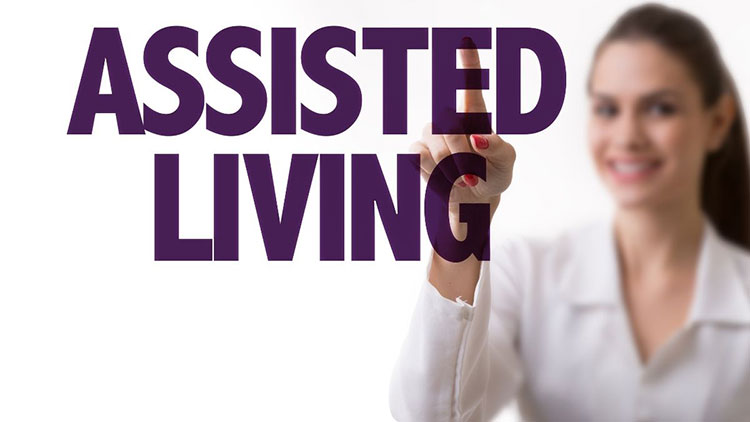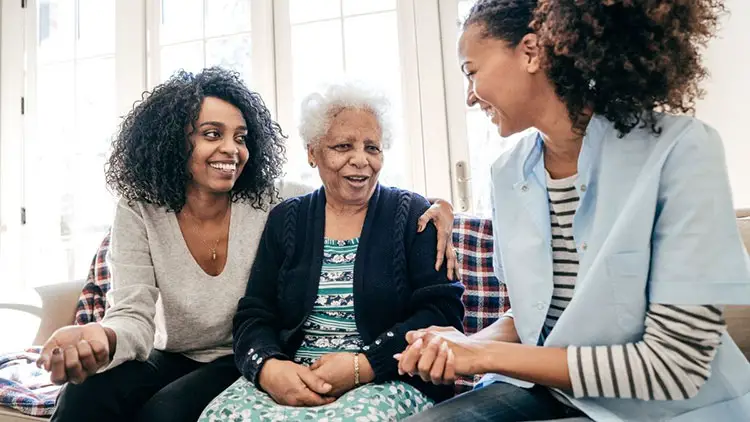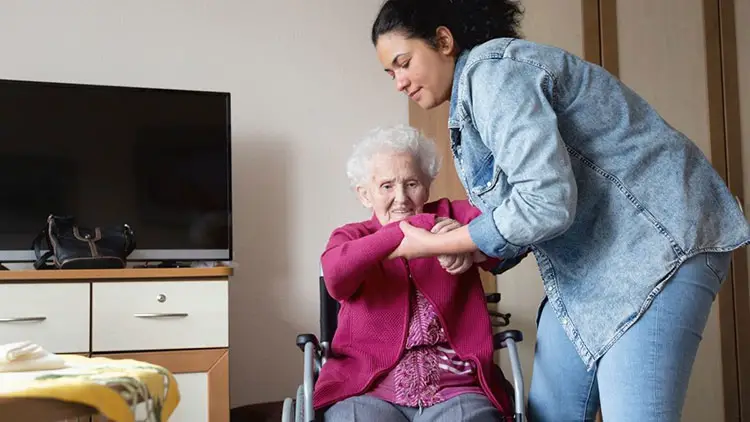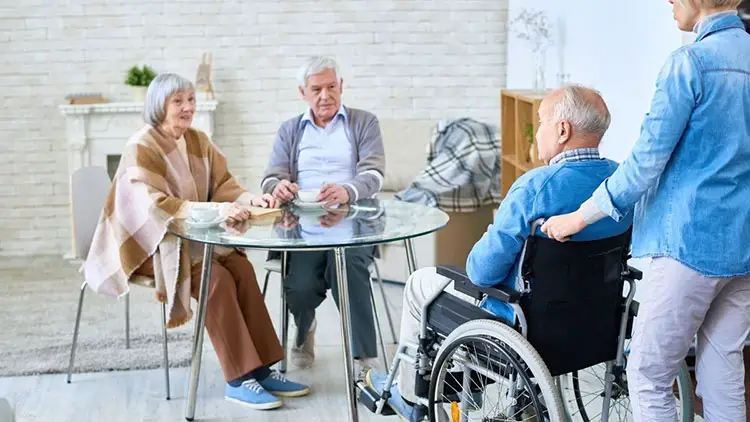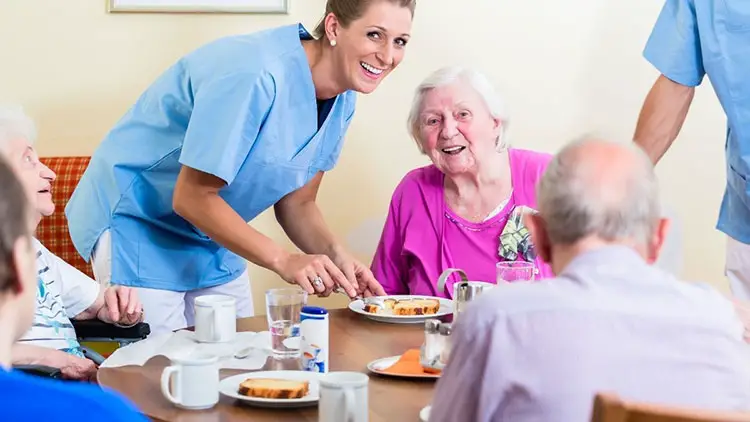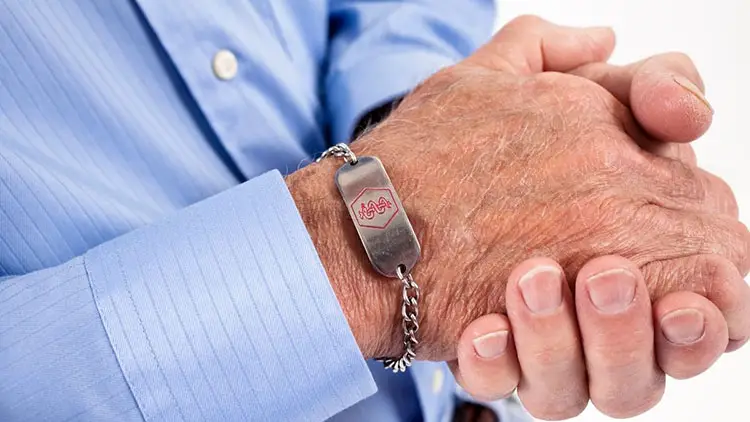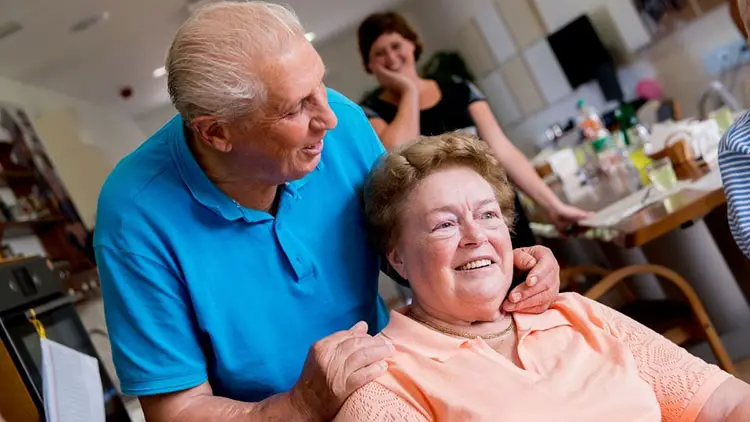Key Points:
- “Assisted Living Care” has no policy definition, but generally refers to personal care homes or residential care facilities where residents receive help with activities of daily living.
- An assisted living facilities differs from a nursing facility in that a nursing facility offers a more robust level of care.
- Alternatives to assisted living facilities include moving in an adult caregiver, unique places like The Green House Project, congregate housing, in-home care, medical alert systems, and adult day care.
- Nursing home level care is the step after assisted living.
As we age, it’s a given that our health and ability to function will decrease. This means we may find ourselves (or our loved ones) looking at assisted living facilities to help. These facilities exist for a reason – it becomes more difficult to do normal activities of daily living (personal care, toileting, laundry, housekeeping, transportation, etc.).
The key is to get these normal activities taken care of so that we don’t start suffering a loss in the quality of life we have. That’s where assisted living facilities come into the picture.
Assisted living facilities are a step above living independently. You get more attention and more care than what you would ever get in a ‘normal’ living situation.
What is Assisted Living Care?
The definition of assisted living care is really determined by each state. There are no federal standards for assisted living facilities. About 33 states in the U.S. use the term “assisted living.” The remainder of them use the term personal care homes or residential care facilities.
Assisted living is exactly as it sounds. It’s for those who need a little assistance with daily living. Daily living activities include meals and meal preparation would give a little assistance. Daily living includes traveling to the grocery store, doctor visits, and other places; assisted living means help with these. Perhaps it’s having a driver that takes you places where you need to go.
Daily living activities include dressing, toileting, laundry and housekeeping. Assisted living facilities help with this, too.
A safe living place is provided in the places, complete with three meals a day. Help with activities of daily living are provided. Security and general monitoring is offered, 24/7, and general nursing care is available, depending on the facility’s guidelines.
Generally speaking, residents here have more stable health than those in a nursing home, although you may receive help for getting your medications on a regular schedule from a nurse. If you have a home health agency contract, you may be able to obtain home health services while living in this type of housing.
This type of housing gives you full assistance with all the activities of daily living. If you need assistance in your mobility, medication administration, and need 24 hour personal care and health care services every day of the week, a more intense facility may be needed.
What’s the Difference Between Assisted Living and Nursing Homes?
The primary difference between assisted living and nursing homes is the level of care and the clinical setting. In a nursing home, there are 24/7 professional nursing staff and a feeling of a more medically-oriented place.
Here are some of the differences in chart form:
| Assisted Living Care | Nursing Home | |
|---|---|---|
| Non-Care Services | Recreational activities Non-medical transportation Laundry, housekeeping, meals Supervision | Limited recreational activities Laundry, housekeeping, meals Supervision |
| Living space | Private or shared studios or apartments Lots of common living space and outside grounds | Private or shared rooms Limited common areas Few or no outside areas |
| Roommates | Anywhere from 5-300 Average: 50 | Usually 96-beds and greater |
| Who It’s Good For | Those who need some personal care Those who can walk Those that want assistance Memory problems | Those who need extensive personal care Those not mobile Need daily medical care Those with severe impairments in brain Those that don’t want assistance Those with personality problems |
| Costs (estimates) | $4,300/month but more for those that need supervised Alzheimer’s care (could be up to $5,200/month or greater) | $7,441/month |
| How Bill is Paid | VA Pensions Medicaid Special help for Alzheimer’s Out-of-pocket | Medicaid |
Alternatives to Assisted Living
If you find that assisted living facilities are not what you’re looking for (or ready for), there are alternatives that you can explore.
Moving In an Adult Caregiver
One of the ways that seniors can still stay at home is by utilizing any extra bedrooms and offering one of them to a full-time caregiver. You’d still need extra help on the days off of the caregiver, but this method may at least extend the amount of quality time you stay at home. And home is your castle, so you’re going to be at your very best there.
The challenge is here is that unless you know someone (a family friend or family member) who is able and willing to provide the care for free or a fee, staffing in this field can be very difficult.
The Green House Project
The Green House Project is one of the newest and most exciting types of housing that can be an alternative to assisted living facilities. These facilities are residential homes with 6-10 seniors and the goal is to provide a warm, comfortable environment, utilize ceiling lifts and adaptive devices, and also provide plenty of sunlight and greenery for the feeling of wellness. Homes are set up to provide high levels of care.
Congregate Housing
This is federally-subsidized housing where the different states receive grants to provide services for the elderly. One meal a day is given to people in a group setting every day of the week. Non-medical support services is offered. The person receiving services pays up to 20% of their income for this type of housing.
In-Home Care
In- home care is where you have caregivers come into the home daily to provide the services you need. These services can go beyond basic daily living tasks to include visits from nurses for would care, medical checkups, etc.
The advantage is that you can still stay in your home. The disadvantage, like with an unfamiliar move-in caregiver is that it may be difficult to find some good ones. In other words, from my experience, staffing turnover is high as the work is hard and the pay is not great. People burnout, don’t show up, etc. There are exceptions, but this is not an uncommon experience.
Note that these staffing shortages are not a reflection of the staff working in this field as they are – overwhelmingly – motivated by helping people in need. They often enjoy the work, but complain about the pay, and rightfully so.
Medical Alert Systems
This is using different types of medical alerts, such as smart technology that monitors your blood sugar and heart rate. MobileHelp is one company that offers “round the clock protection” in various medical alert systems. Their products (and others like them) can offer a peace of mind for both the wearer and the caregiver.
These products are not going to help someone get around the house, for example, but should someone fall or face a medical incident, they can become life-saving devices.
Adult Day Care
I directed the adult day care program at an Alzheimer’s Care Center for several years, so this is a program I’m very familiar with. I was also a member of the Maine Adult Day Services Association.
This is where you or your loved one can go to during the day and then return home at the end of the day. It is designed in large part as a way to offer caregiver respite. For adult children who are providing personal care for older parents, this can be a great option where you are allowed the freedom to go to work while your parent goes to a safe program, gets a meal, receives care, and can also access appropriate bathing facilities with help. It may work if you don’t need 24/7 supervision.
What is the Next Level of Care After Assisted Living?
After Assisted Living, the next level of care is nursing homes, also known as facility-based care. Spend time reviewing the chart in this article first and then check out the different options by reading online. After this step, call some of the local assisted living options and visit them. You’ll be able to make a good decision with all this new information.

